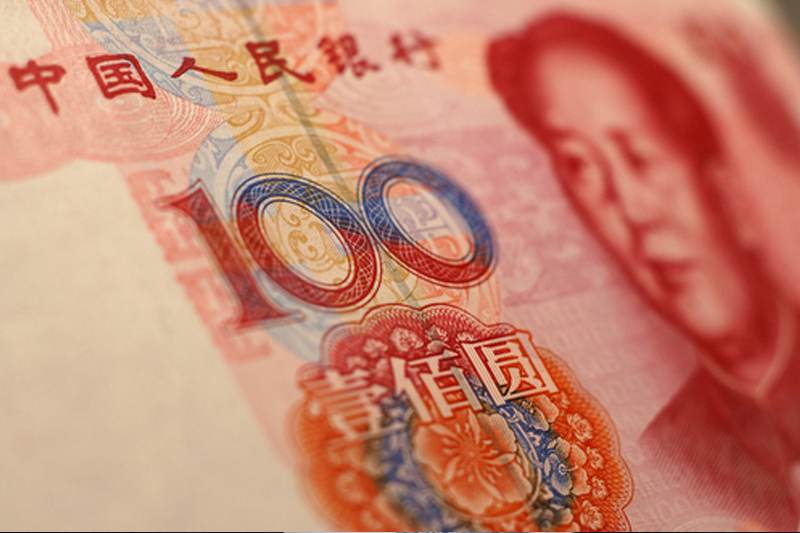(Bloomberg) -- China’s yuan extended declines, sinking the most since the aftermath of the shock devaluation of the currency in August 2015, after trade figures missed estimates and amid speculation policy makers will step up efforts to rein in gains.
The onshore spot rate weakened 0.7 percent to 6.3269 against the dollar as of 1:22 p.m. in Shanghai, after dropping as much as 1 percent earlier. The currency extended losses after China reported a much narrower trade surplus than expected, on the back of a jump in imports. Volatility surged, and the gap between onshore and offshore rates tripled compared with the same time on Wednesday.
The yuan’s climb to a two-year high this week had fueled speculation officials may seek to curb one-way bets, and that they will grow more tolerant of capital outflows:
- The foreign-exchange regulator said Wednesday that it sees “more noticeable” two-way yuan moves
- A front-page Economic Daily commentary on Thursday said more fluctuations are likely
- The country has resumed its Qualified Domestic Limited Partnership plan after a two-year halt, granting licenses to about a dozen global money managers that can raise funds in China for overseas investments, Reuters reported on Thursday, citing people it didn’t identify.
“Excessive confidence led to an excessive rally in the yuan, and then there came excessive concerns on intervention, which resulted in excessive nervousness,” said Zhou Hao, an economist at Commerzbank AG (DE:CBKG) in Singapore. “The pressures reached a peak today as the trade data surprised and stocks slumped. So the result was a stampede with stop-loss being triggered and yuan bulls rushing to the exit. The currency will remain pressured in the coming weeks.”
Chinese shares extended declines along with the yuan, with the Shanghai Composite Index set for its largest three-day drop in almost two years.
Data on Thursday showed the nation’s trade surplus stood at $20.3 billion in January, less than half of the forecast figure, as imports jumped more than expected.
Before Thursday’s pullback, the yuan had outperformed other currencies against the greenback on optimism over the Chinese economy and the conversion of foreign-currency funds accumulated during during the three years of depreciation through 2016.
Here’s what other strategists made of the sudden slump:
Tommy Xie, an economist at Oversea-Chinese Banking Corp. in Singapore:
“Today’s trade surplus worked as the key catalyst for the long yuan positions to square. With SAFE’s Pan saying all capital control measures rolling back to neutral and Economic Information Daily’s warning on one-way movement of the yuan, traders are scaling back their bets."
Ken Cheung, an Asian FX strategist at Mizuho Bank Ltd.:
“The slide of the yuan today is triggered by the unexpected decline in China’s trade surplus. As previously market view was very one-sided to favor yuan, the negative data should have led to adjustment of extreme long-yuan positions."
“Besides, the reported resume of QDLP program also signal China has started to relax control on outflows, in a bid to cut appreciation bias."
Sim Moh Siong, currency strategist at Bank of Singapore Ltd.:
“My take is it’s a combination of factors including stronger dollar, the nervousness in the equity market and the heavy positioning accumulated earlier that’s caused the decline. The way USD/CNY has moved recently indicated there’s quite heavy long yuan positions recently and in light of equity market and dollar rebound, that’s probably led to some position liquidation."
“The trade surplus and the news about resuming the QDLP could be a factor, but I’m not sure they’re the main driver. Actually I don’t think the trade data is that surprising, as it’s very difficult to forecast after all, so I’m hesitant to read too much into it."
